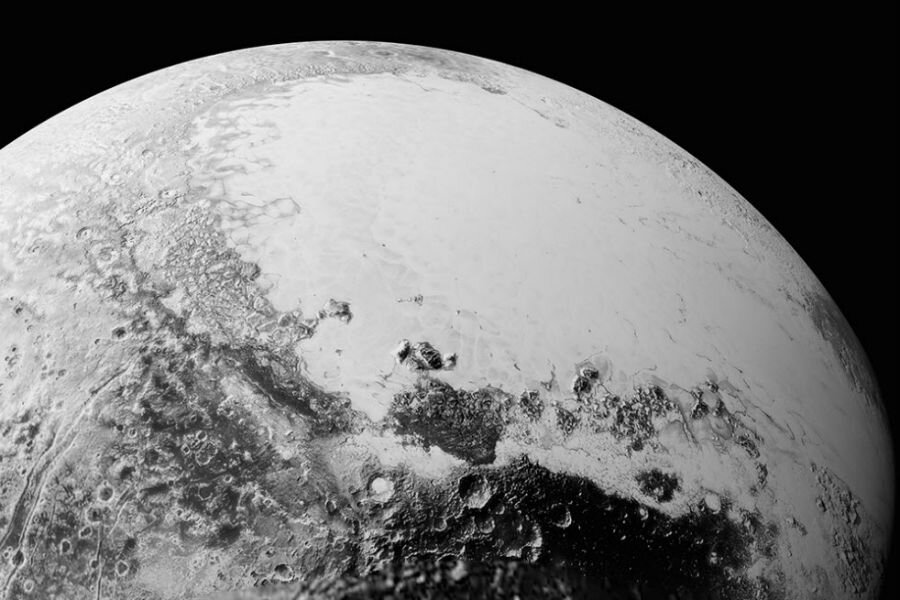Postage stamp travels to Pluto, earns world record
Loading...
An extremely well-traveled postage stamp has set a Guinness World Record after boldly going where no postage stamp has gone before: Pluto.
The stamp, which traveled 3.26 billion miles in its past ten years aboard the New Horizons spacecraft, was honored in a ceremony Tuesday at the Postal Service headquarters.
"When I started to look at the record, over 3 billion miles, I started thinking about the history of the Postal Service," official Guinness World Records adjudicator Jimmy Coggins said at the ceremony, Space.com reports.
In the early 1800s, he said, it took four to seven weeks to deliver a letter from the East coast of the United States to the West coast. In the mid-1850s, the era of the Pony Express, it still took 10 days for mail to travel from St. Louis to San Francisco, a distance of about 2,000 miles.
The voyage to Pluto is another story.
"To think about this distance, 3 billion miles — that is about 131 [thousand] times around the circumference of the Earth and it was delivered in less than 10 years," Mr. Coggins said. "If the Pony Express was trying to deliver that far, they would be swapping ponies out for the next 47,000 years before it got there."
A 29-cent stamp featuring the words "Pluto: Not Yet Explored," was part of a series of stamps issued by the US Postal Service (USPS) in 1991 to celebrate space exploration. At the time, very little was known about the dwarf planet. In 2006, NASA placed one of the stamps on the New Horizon spacecraft as it began its long journey to Pluto.
"I have to say, it was a beautiful stamp," Alan Stern, the mission's principal investigator, said Tuesday. "It really inspired us when we were building New Horizons to explore this last of the classical planets. Well, we canceled that stamp last July when we flew by Pluto."
One year ago last week, after nearly a decade of traveling, the New Horizons probe made its closest approach to Pluto. To celebrate the flyby, the USPS issued a new set of stamps titled "Pluto – Explored!" on May 31, 2016, featuring an artist's rendering of the spacecraft and an image of Pluto taken by New Horizons.
Thus far, the mission has shattered many misconceptions about dwarf planets and revealed a far more complex world than expected, as The Christian Science Monitor's Pete Spotts reported last year:
As the first mission to the last of the nine "classic" planets, New Horizons is the flyby bookend to the 53 years of planetary exploration that began with 1962’s Mariner 2 flyby of Venus. The latest photos are a stunning reminder of how radically those years have changed humanity’s understanding of its cosmic neighborhood.
They have revealed a dazzling array of complexity – from massive volcanoes and hydrocarbon seas as large as the Great Lakes – on planets and moons whose processes in surprising ways seem remarkably Earth-like.
They have revealed bodies still very much alive geologically and in the unlikeliest places, driven by tides that heat the innards of distant icy moons and create towering geysers and hidden seas of liquid water.
And as the understanding has grown of how hardy and resilient life is on Earth, recent years have also expanded the number of places beyond Earth where at least simple forms of life may have established beachheads.
Since its launch in 2006, the New Horizons mission has set at least one other Guinness World Record: fastest speed at which a spacecraft has departed from Earth, at 36,250 mph. Forty seven years ago, it took the Apollo 11 spacecraft three days to reach the moon; New Horizons was able to travel the same distance in only nine hours.
"The New Horizons project is honored to be recognized by Guinness World Records for its achievements," Dr. Stern said in a statement. "Among my personal favorites are being the fastest spacecraft ever launched, the first mission to explore the Pluto system, the mission that explored the farthest worlds ever visited — and now sending a U.S. postage stamp farthest from Earth!"
And the stamp's journey isn't finished quite yet: NASA announced recently that the New Horizons mission will extend at least another 1 billion miles beyond Pluto to visit a Kuiper Belt Object known as 2014 MU69.








